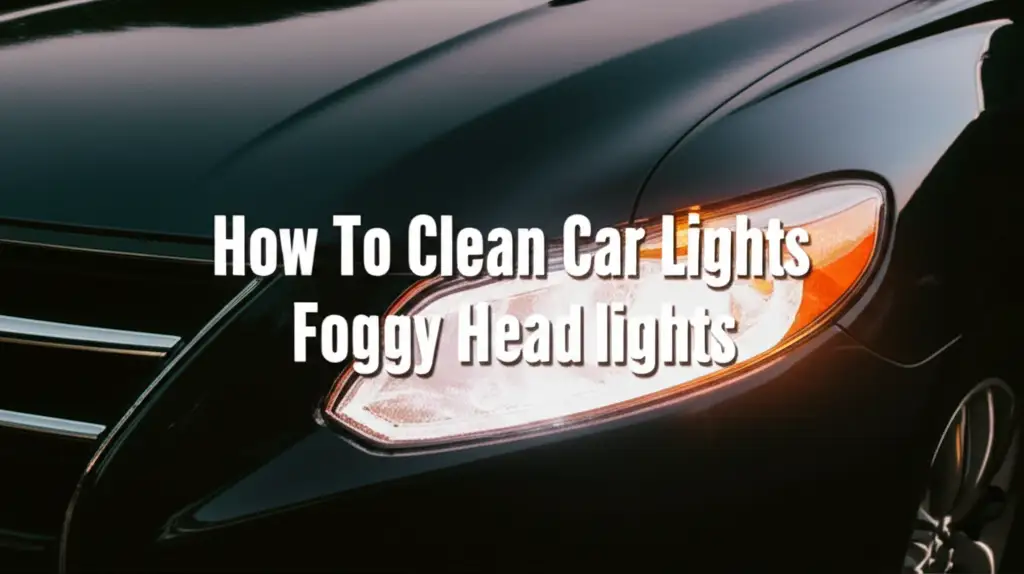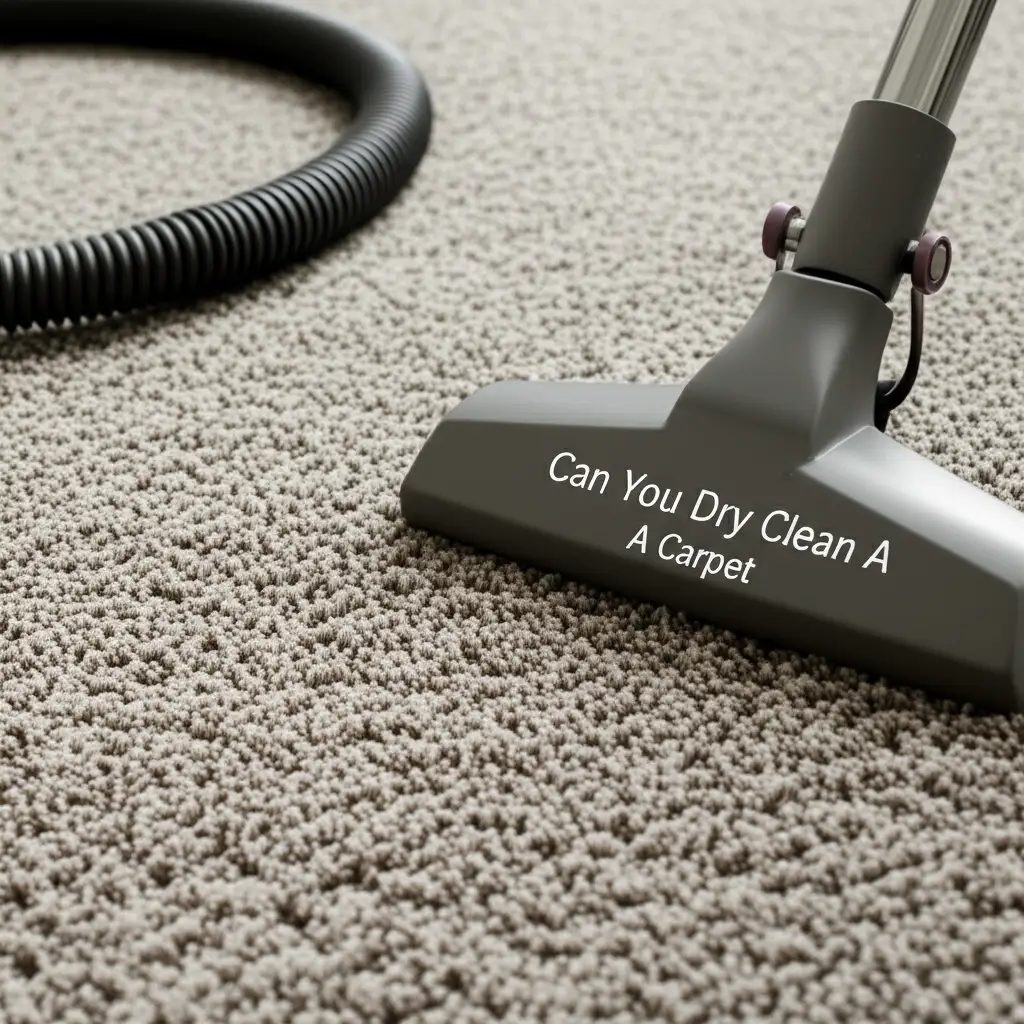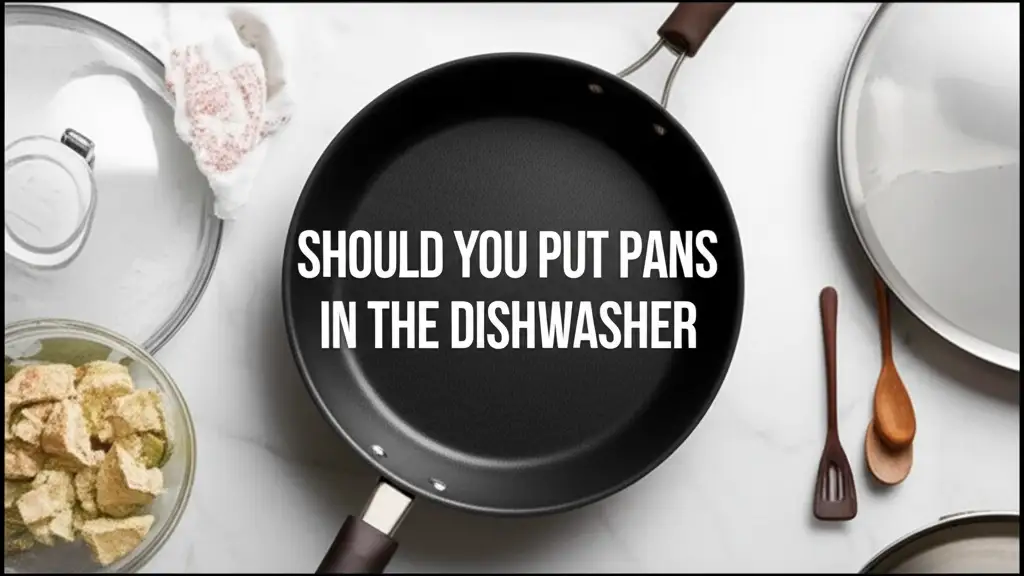· Elira Thomsen · Auto Maintenance · 15 min read
How To Clean Car Lights Foggy Headlights

Restore Your Headlights: How to Clean Car Lights Foggy Headlights Effectively
Imagine driving at night. Your car lights shine dimly, and the road ahead looks blurry. This often happens because your car’s headlights have become foggy or yellowed over time. These cloudy headlights reduce visibility and make night driving dangerous. You need clear headlights for safe travels.
Cleaning car lights that are foggy is a simple task you can do at home. This guide will show you how to clean car lights foggy headlights using common items and specialized kits. We will cover why headlights fog up and the clear benefits of restoring them. You will learn step-by-step methods to bring back your headlights’ clarity. Let’s make your car shine brighter and your drives safer.
Takeaway
- You can easily restore foggy headlights yourself.
- Various methods exist, from household items to specialized kits.
- Clear headlights improve driving safety and your car’s appearance.
- Regular maintenance helps prevent future fogging.
Cleaning car lights with foggy headlights involves removing oxidized plastic layers. You can achieve this using abrasive compounds like toothpaste or specialized restoration kits. The process brings back clarity to the lens, ensuring better light output and safer night driving. This simple task significantly improves visibility and your car’s look.
Understanding Headlight Fogging: Why Car Lights Become Foggy
You might wonder why your car’s once-clear headlights look cloudy. This common problem affects many vehicles over time. Several factors contribute to headlights becoming foggy. Understanding these causes helps you prevent future damage and choose the best cleaning method.
The main reason headlights become foggy is exposure to ultraviolet (UV) light. Car headlights have a clear protective coating from the factory. This coating protects the plastic lens from harmful UV rays. Over time, sunlight breaks down this protective layer. This breakdown causes the plastic to oxidize and turn yellow or cloudy.
Road debris and environmental elements also play a role. Tiny rocks, dirt, and sand hit your headlights as you drive. These impacts create small scratches on the surface. These scratches make the lens look dull and reduce its clarity. Furthermore, car washes, harsh chemicals, and even normal wear and tear can wear down the protective coating.
Moisture can also contribute to headlight fogging. Sometimes, moisture gets inside the headlight assembly. This internal condensation creates a hazy appearance. If you see moisture inside the lens, the seal around the headlight might be broken. This issue requires professional help to fix the seal. However, most fogging comes from external oxidation of the plastic. Cleaning car lights is often focused on this external layer.
Benefits of Clear Headlights: Why Visibility Matters
Having clear headlights offers more than just a nice look for your car. The benefits extend directly to your safety and the longevity of your vehicle. Ignoring foggy headlights can lead to serious problems. Taking action to clean car lights with foggy headlights provides many important advantages.
First, clear headlights greatly improve your driving safety. Dim or foggy headlights reduce the amount of light shining on the road. This makes it harder to see obstacles, pedestrians, and other vehicles, especially at night or in bad weather. Better visibility gives you more time to react to dangers. This helps prevent accidents and keeps you and others safe on the road.
Clear headlights also enhance your car’s appearance. Foggy, yellowed headlights make any car look old and poorly maintained. Restoring your headlights instantly improves your car’s overall look. It gives your vehicle a fresh, well-cared-for appearance. This small change makes a big visual impact.
Furthermore, clear headlights can save you money. In some places, extremely foggy headlights can lead to a traffic ticket. Maintaining clear lights helps you avoid these penalties. Also, when you decide to sell your car, clear headlights increase its resale value. Buyers see a car that has been well-maintained. This can make your car more appealing and help you get a better price. Regularly cleaning your headlights is a simple part of maintaining your vehicle for both safety and value.
Gathering Your Tools: Essential Supplies for Headlight Cleaning
Before you begin to clean car lights that are foggy, you need to gather the right supplies. The tools you use depend on the method you choose. Some methods use common household items, while others require specialized kits. Having everything ready before you start makes the process smooth and efficient.
For basic household item methods, you will need a few simple things. Start with masking tape or painter’s tape. This tape protects the paint around your headlights. You will also need several clean microfiber cloths. These cloths are soft and will not scratch the headlight lens. Water is essential for rinsing and mixing some solutions.
Common household cleaning agents can include toothpaste and baking soda. For the toothpaste method, use a non-gel toothpaste. It should contain mild abrasives. For the baking soda method, you will need baking soda and white vinegar. These items create a powerful cleaning paste. Dish soap can also be useful for an initial wash.
If you choose a dedicated headlight restoration kit, it will contain most of what you need. These kits typically include various grades of sandpaper, polishing compounds, and a UV sealant. They often come with applicator pads and sometimes a drilling attachment. Even with a kit, keep masking tape and microfiber cloths handy. Having the right car cleaning supplies ensures a successful restoration project.
Step-by-Step Guide: How to Clean Foggy Headlights with Household Items
You can effectively clean foggy headlights using items you likely already have at home. These methods are simple, cost-effective, and can significantly improve your headlight clarity. We will cover two popular household item methods: toothpaste and baking soda. Always test a small, inconspicuous area first.
The Toothpaste Method for Headlight Restoration
The toothpaste method is a popular choice for light to moderate headlight fogging. Toothpaste contains mild abrasives that can gently buff away the oxidized layer on the plastic. It is similar to how it cleans your teeth. This method is quick and requires minimal supplies.
First, clean your headlights thoroughly with soap and water. Rinse them well and let them dry completely. Next, apply masking tape around the headlight lens. This tape protects the surrounding paint from the toothpaste. Squeeze a generous amount of non-gel toothpaste onto a clean microfiber cloth.
Now, firmly rub the toothpaste onto the foggy headlight lens. Use small, circular motions. Apply steady pressure. Continue rubbing for several minutes, focusing on the most yellowed areas. The toothpaste will begin to break down the cloudy layer. After rubbing, rinse the headlight thoroughly with water. Use a clean, damp microfiber cloth to remove all toothpaste residue. Buff the headlight dry with another clean microfiber cloth. You should notice a clear improvement in the headlight’s appearance.
The Baking Soda and Vinegar Method
Another effective household remedy uses baking soda and white vinegar. This combination creates a powerful paste that can tackle more stubborn fogging. The chemical reaction between baking soda and vinegar helps lift away the grime and oxidation. This method is also very affordable.
Begin by washing your headlights with soap and water. Rinse them completely and let them dry. Apply masking tape around the headlight lens to protect your car’s paint. In a small bowl, mix two parts baking soda with one part white vinegar to form a thick paste. For example, use two tablespoons of baking soda and one tablespoon of vinegar.
Apply this paste generously to the entire headlight surface. Use a clean microfiber cloth or a soft sponge to spread it evenly. Let the paste sit on the headlight for about 5-10 minutes. This allows the mixture to work on the oxidation. After the waiting time, use the microfiber cloth to scrub the paste onto the headlight in circular motions. Apply firm, even pressure.
Rinse the headlight thoroughly with water to remove all paste residue. Make sure no paste remains. Finally, dry the headlight completely with a clean microfiber cloth. Compare the restored headlight to its original foggy state. You will likely see a significant improvement in clarity.
Step-by-Step Guide: Using a Headlight Restoration Kit for Best Results
For more severe headlight fogging or if you want professional-level results, a dedicated headlight restoration kit is your best choice. These kits come with everything you need for a thorough cleaning and protection. They typically involve sanding, polishing, and sealing. This process ensures longer-lasting clarity.
Preparing Your Headlights for Restoration
Proper preparation is key to a successful restoration. Start by thoroughly cleaning the headlight lens with soap and water. Remove all dirt, grime, and bugs. Rinse the headlight completely and dry it with a clean towel. This initial cleaning removes surface contaminants.
Next, use masking tape or painter’s tape to protect the surrounding paintwork. Apply the tape generously around the entire headlight assembly. Make sure the tape creates a clear border, preventing sanding or polishing compounds from touching your car’s finish. This step is crucial. Do not skip it.
Sanding the Headlight Lens
Sanding is a critical step in a restoration kit. It removes the deepest layers of oxidation and scratches. Headlight restoration kits typically include several grits of sandpaper, starting coarse and moving to fine. You will use them in sequence.
Begin with the coarsest grit sandpaper provided in your kit (e.g., 400 or 600 grit). Wet the sandpaper and the headlight surface with water. Keep both wet during the entire sanding process. Sand the headlight in horizontal motions, covering the entire lens. Apply even pressure. You will see a milky residue. This means you are removing the oxidized layer. Continue until the entire lens has an even, dull, hazy look. Rinse the headlight and wipe it dry to check your progress.
Move to the next finer grit sandpaper (e.g., 1000 grit). Repeat the wet sanding process, but this time use vertical motions. This helps remove the scratches from the previous, coarser grit. Continue until the entire lens has a more uniform haziness. Rinse and wipe dry. Repeat this process with progressively finer grits (e.g., 2000, 3000 grit), alternating sanding directions (horizontal, vertical, diagonal). Each finer grit refines the surface and makes it less hazy. The goal is a uniform, very fine haze across the entire lens. Your headlights will be ready for polishing.
Polishing for Clarity
After sanding, your headlights will look hazy, but they will be smooth. Polishing brings back the clarity. Most kits include a special polishing compound designed for plastic lenses. This compound removes the fine scratches left by the last sanding step and restores transparency.
Apply a small amount of the polishing compound onto a clean foam applicator pad or a microfiber cloth. Rub the compound onto the headlight lens using firm, circular motions. If your kit includes a drill attachment for polishing, follow the kit’s instructions carefully. The drill makes the process faster and more effective. Polish until the headlight becomes clear and shiny. This might take several minutes of continuous rubbing.
Wipe off any excess polishing compound with a clean microfiber cloth. Inspect the headlight. It should now appear clear and significantly less foggy. If any haziness remains, you might need to repeat the fine sanding and polishing steps.
Sealing for Protection
The final and most important step is applying a UV sealant. The sanding and polishing removed the factory’s protective coating. Without a new sealant, your headlights will fog up again very quickly. The sealant protects the newly clear plastic from UV rays and environmental damage.
Ensure the headlight is completely clean and dry before applying the sealant. Follow the kit’s specific instructions for applying the sealant. Some sealants are wipes, others are sprays, and some are liquids you rub on. Apply an even coat over the entire headlight lens. Avoid streaks or uneven application.
Allow the sealant to cure according to the kit’s instructions. This usually involves letting it dry for a certain period, sometimes several hours or even a full day. Do not touch the headlight during this curing time. The sealant creates a durable protective layer. This layer helps prevent future oxidation and yellowing. Regular UV protection for cars extends the life of your restoration.
Advanced Tips for Headlight Restoration: Achieving Professional Results
Sometimes, a simple kit might not be enough, or you might want even better results. There are advanced techniques and tools that can help you achieve a truly professional-looking restoration. These methods can tackle very severe fogging and deliver long-lasting clarity. You can aim for professional results when you clean car lights.
Using Power Tools for Faster Polishing
For quicker and more effective polishing, you can use power tools. A standard electric drill with a foam polishing pad attachment is a common choice. These attachments are often included in restoration kits or sold separately. Power polishing reduces the effort needed and produces a more uniform finish.
When using a drill, ensure you set it to a low to medium speed. Apply the polishing compound to the pad and spread it on the headlight. Gently move the spinning pad across the lens, applying even pressure. Keep the pad flat against the surface. Avoid staying in one spot for too long, as this can generate too much heat and damage the plastic. Move the drill slowly and steadily to cover the entire headlight. The machine’s consistent motion removes imperfections more effectively than hand polishing alone.
When to Consider Professional Headlight Restoration Services
While DIY methods are effective, sometimes professional help is the best option. If your headlights have deep cracks, significant internal moisture, or very severe damage, a DIY kit might not be enough. Professionals have access to specialized tools and stronger chemicals. They can also address internal issues.
Professional services often involve more aggressive sanding and use industrial-grade polishes. They apply high-quality, durable clear coats that offer superior UV protection. This clear coat is typically much thicker and more robust than what comes in a consumer kit. The results are usually longer lasting and can look brand new. If you are unsure about tackling the job yourself, or if your headlights seem beyond simple repair, a professional service is a worthwhile investment. This ensures optimal safe driving and appearance.
Maintaining Clear Headlights: Preventing Future Fogging
Restoring your headlights is a great accomplishment, but the job is not truly done. Without proper maintenance, your headlights will eventually fog up again. Taking preventative steps helps maintain their clarity for a much longer time. Regular care keeps your car looking great and ensures optimal visibility for years to come.
One of the most important steps is to apply a UV protectant regularly. The new clear coat or sealant from your restoration provides protection, but it will wear down. Products like automotive wax, ceramic coatings, or dedicated headlight sealants with UV blockers can add an extra layer of defense. Apply these products every few months, especially if your car spends a lot of time outdoors. Think of it as sunscreen for your headlights. This extra layer significantly slows down the oxidation process.
Regular cleaning also plays a big role. Do not let dirt, grime, and road salt build up on your headlights. These substances can accelerate the breakdown of the protective layers. Wash your headlights regularly with car soap and water. Use a soft sponge or microfiber cloth. Avoid harsh chemicals or abrasive brushes, which can scratch the surface. A gentle wash during your regular car cleaning routine is usually enough.
Consider using a car cover if your vehicle is often parked outside. A car cover protects your entire car from UV exposure, dust, and environmental fallout. This includes your headlights. Even parking in a garage or shaded area helps. Limiting direct sunlight exposure is a key strategy in preventing future headlight fogging. By following these simple maintenance tips, you can extend the life of your headlight restoration. You can also keep your car lights clear for safer driving.
FAQ Section
Can I use WD-40 to clean headlights?
No, you should not use WD-40 to clean your headlights. While it might temporarily make them look shiny, WD-40 does not remove the underlying oxidation. It can actually attract more dirt and leave an oily residue. Use products specifically designed for headlight cleaning or restoration.
How long does headlight restoration last?
The duration of headlight restoration varies. Household methods might last a few months. DIY restoration kits usually last 1-2 years, especially with a good UV sealant. Professional restorations can last 3-5 years or more. Regular application of a UV protectant can extend the clarity of any restoration.
Is professional headlight restoration worth it?
Yes, professional headlight restoration is often worth it for severely damaged headlights. Professionals use industrial-grade products and techniques. They can address deep damage and often provide a more durable, longer-lasting clear coat. It is a good choice if you want the best possible results without doing the work yourself.
What causes headlights to yellow?
Headlights yellow primarily due to UV exposure from the sun. The clear protective coating on the plastic lens breaks down over time. This breakdown leads to oxidation, causing the plastic to turn cloudy or yellow. Road debris and harsh cleaning chemicals also contribute to the damage.
Can toothpaste really clean headlights?
Yes, toothpaste can really clean headlights, especially for light fogging. Non-gel toothpaste contains mild abrasive particles. These particles help buff away the thin oxidized layer on the headlight surface. It is a simple, temporary solution that can improve clarity, but it lacks long-term protection.
How often should I clean my headlights?
You should clean your headlights as needed, typically when you notice them starting to fog or yellow. For preventative maintenance, consider cleaning them during your regular car washes. Apply a UV protectant every few months. This consistent care helps maintain clarity and prevent future damage.
Conclusion
You now know how to clean car lights that are foggy headlights. This simple task offers significant benefits. Clear headlights improve your visibility for safer night driving. They also enhance your car’s appearance and can even boost its resale value. You have learned different methods, from using common household items like toothpaste to comprehensive restoration kits.
Remember that proper preparation, careful execution, and consistent maintenance are key. Whether you opt for a quick DIY fix or a more thorough kit restoration, the effort is well worth it. Do not let foggy headlights compromise your safety or your car’s look. Take action today. Restore your headlights and enjoy clearer, safer drives. Now is the time to clean car lights foggy headlights for good.
- Clean Foggy Headlights
- Headlight Restoration
- Car Maintenance
- DIY Car Care
- Improve Visibility
- Automotive Safety





